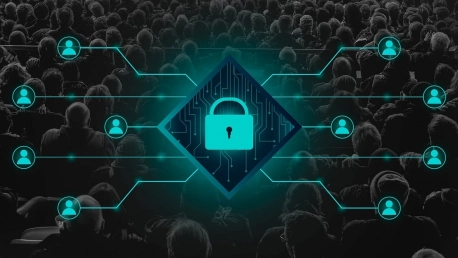The digital age has brought many wonders, along with a host of new threats to our virtual doorstep. In the battle over network security, professionals face an ever-changing enemy landscape. This continuous march of technological progression is now further complicated by the rise of Artificial Intelligence (AI) in cyber threats, particularly ransomware and AI-generated impersonation tactics such as deepfakes. Understanding and adapting to these changes is not just a matter of updating software—it’s about a fundamental shift in how we approach network security.
The Persistent Menace of Ransomware
Ransomware: An Adaptive and Evolving Threat
Ransomware remains a vexing challenge for security experts, demonstrating an uncanny ability to evolve. Just as security measures grow more sophisticated, so do the methods of these malicious programs. From its tactics of encrypting a victim’s data and demanding payment, ransomware has expanded its arsenal to include the exfiltration of sensitive information. Now, in the closing months of 2022, we see a disturbing trend—approximately 70% of ransomware attacks involve data theft, a significant increase from 40% the previous year. The specter of stolen data being leaked pushes many organizations to the brink of compliance, underscoring the need for relentless vigilance.
Responding to Ransomware’s Evolution
Organizations are being urged to step up their game to confront ransomware’s evolving threat. The vice president of World Wide Technology underlines the reality that these attacks don’t occur in isolation but happen alarmingly often—sometimes weekly. The new extortion strategies are horrifyingly personal, with attackers not only threatening to leak data but also to target corporate executives directly. The call to action is proactive and clear: organizations must anticipate and prepare robust defenses against these aggressive tactics.
Deepfakes: The Emergent Challenge
The Rise of AI-Generated Impersonation
One of the most cunning uses of AI in cybercrime is the creation of deepfakes—false representations of individuals created to deceive. Take the shocking incident where fraudsters simulated a CFO’s identity during a video call, successfully duping an unsuspecting finance worker into transferring vast sums. This new vector of cyber threats showcases the dark side of AI, as it becomes a tool of elaborate fraud. It’s a sobering reminder that with every technological advance comes new risks—and new weapons for criminals.
Strengthening Defenses Against AI-based Fraud
With AI posing an impending threat to network security, the strategy to combat them is evolving as well. Enhanced API security is one of the frontlines in this fresh war against AI-related fraud. The battle isn’t just against breaches but also against the orchestration of trust. As AI plays an escalating role in network threats, the security community is diligently working to shore up defenses, acknowledging that the human element is as much a part of the security infrastructure as the technological one.
The Imperative of Network Segmentation
Acknowledging Internal Threats
In what can be described as a shift in perspective, security experts now realize that the danger might already lurk within. This acknowledgment has placed an emphasis on preventing and containing lateral movement within networks, often a sign that a breach has spread. Cisco’s executive vice president asserts the critical role of network segmentation in mitigating this risk. But this is more than just containment—it’s about understanding and reacting to the nature of the attack in real-time.
The Complexity of Segmentation in Modern Networks
Enterprise environments are rapidly becoming virtual labyrinths, with a web of interconnected systems that defy simple segmentation. According to Patel, the microservices and container-driven networks of today present a stark contrast to the more straightforward, legacy three-tier architectures of the past. As networks have expanded and become more nebulous, the task of implementing effective segmentation has evolved into a Herculean endeavor, demanding meticulous planning and sophisticated solutions.
Adapting to Advanced Threats
The Dilemma of Vulnerability Patching
Security expert Patel raises a red flag regarding the vulnerabilities that haunt network infrastructures. In many situations, the required fixes are neither straightforward nor within the direct control of organizations. This latency in response leaves networks exposed and vulnerable, a chink in the armor that attackers are all too eager to exploit. The challenge is clear: moving beyond traditional patch management practices to faster, more effective methodologies that don’t just react but preemptively protect.
Cisco’s AI-Based Solutions
Enter Cisco’s answer to the security conundrum: the AI-based Hypershield architecture. It’s a bold vision integrating security into the network environment. Hypershield offers the promise of autonomous network segmentation, rapid response to exploits without manual intervention, and automatic software updates that strike a balance between maintaining operational continuity and robust defense. It serves as a beacon of what’s possible when AI and machine learning are harnessed to defend our digital frontiers.
The Transition to Intelligent Security Systems
Augmenting Traditional Security Measures
The necessity for intelligent, autonomous systems to bolster conventional security measures has never been more pronounced. As adversaries wield increasingly nuanced attacks, our defenses must evolve to preemptive security solutions that react swiftly and effectively. The integration of AI into security infrastructure is not just an enhancement—it’s becoming essential.
The Industry in Transition
As the digital era unfolds, it brings a multitude of marvels and simultaneously, a slew of new vulnerabilities to our online world. Network security experts are locked in a persistent battle, facing an adversary that evolves with each technological advance. The integration of Artificial Intelligence (AI) has escalated these challenges, specifically with the emergence of advanced AI-driven threats like ransomware and the sophisticated deception of AI-crafted deepfakes. The fact is, keeping pace with these threats goes beyond mere software updates. It necessitates an elemental shift in our strategy for safeguarding our networks. A proactive, dynamic approach is essential to stay ahead of threats that not only evolve but learn and adapt using AI. This means staying informed, being prepared to overhaul existing paradigms, and cultivating a culture of continuous innovation and vigilance in the realm of cyber defense.









